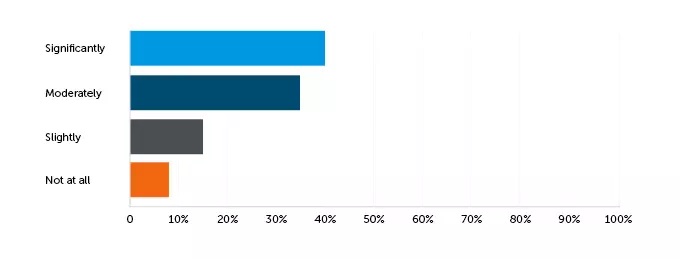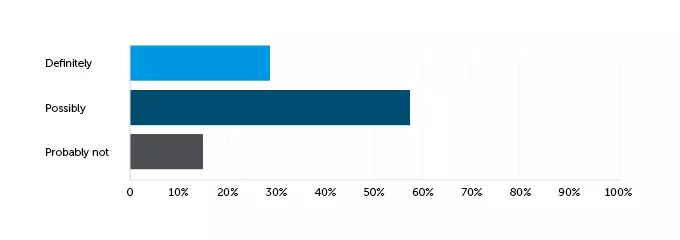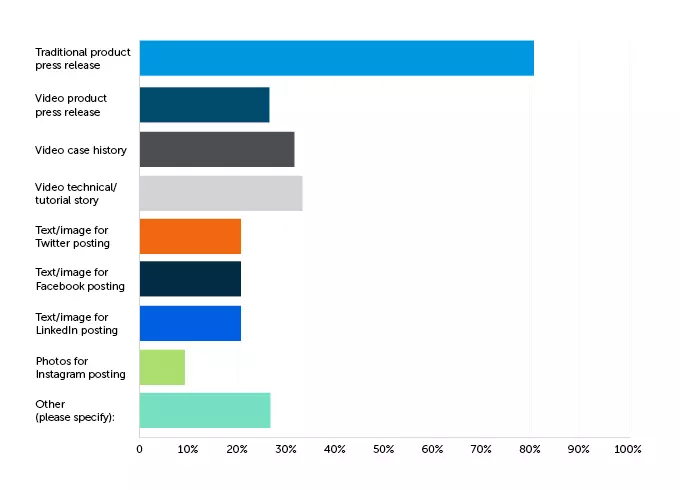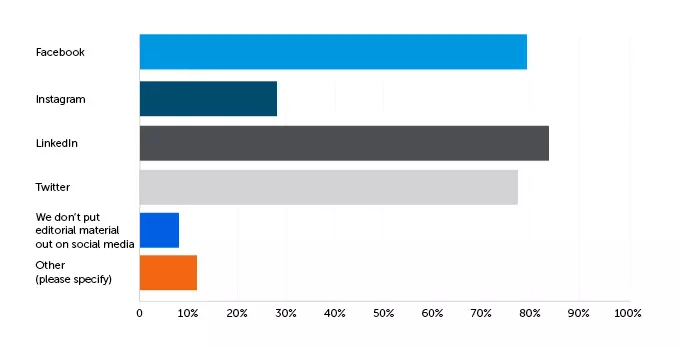Unprecedented Times Take Toll on Trade Journalists

More than 75% have been “significantly” or “moderately” affected by the global pandemic, economy and other issues.
Let’s face it: It’s been a tough year. A very tough year.
As a marketing communication professional, you’ve had to adjust to a global pandemic, a depressed economy, rampant social injustice and a historic — if not controversial — election season.
It’s also been a tough year for the editors, reporters and freelancers who cover a variety of B2B industries, from HVAC and pharmaceuticals to construction, automation and paper. In addition to covering their regular beats, those journalists have had to report on the pandemic, economy and other issues of national and global significance.
Godfrey recently conducted a survey of more than 100 trade journalists to determine how they’re adjusting since the world drastically changed in March. We greatly appreciate everyone’s feedback.
Here are five key takeaways from the survey:
1. More than 75 percent of respondents said these unprecedented times have either “significantly” or “moderately” affected their editorial duties.

How so? Journalists have had to work harder, smarter and with fewer resources. They’ve had to work from home and use virtual conferencing platforms. And they couldn’t attend trade shows, where they typically obtain first-hand knowledge of new products and technologies and access to subject matter experts and executives.
“It has added a lot of pressure to the job,” said one editor. “We have added COVID coverage while doing everything we used to do, including introducing new products.”
“Editorial schedules are out the window, along with events and onsite visits,” said another editor. “Instead, we have new, unexplored digital offerings that need to be invented and led by editorial. We’re all part coders, part help desk, part developers, part writers now.”
And my personal favorite: “Never did I ever think I would be covering a pandemic in an equipment magazine.”
2. Editors are still warming up to the concept of virtual trade shows.

28% of respondents said they are “definitely” likely to attend a virtual trade show, while 57% said they are “possibly” likely to do so. I would have expected a higher percentage of “definitely” likely, especially when you consider how much editors rely on trade shows in their reporting. Chalk it up to learning a new way to cover their industries.
3. The traditional press release is still king (or queen).

We asked editors what types of ready-to-go, supplier- or agency-provided material they would consider using for editorial purposes. More than 81% said the traditional press release, while 35% said a video technical/tutorial story and 33% said a video product press release.
While it’s true that demand for video content has increased dramatically in recent years, most editors still prefer the standard press release — as long as it’s newsworthy, timely, substantive and relevant to the media’s target audience.
“We use information from suppliers and agencies to develop our own social media content,” said one editor. “We are looking for more video content, but more in the form of B-roll, as much of the video content (case histories, technical/tutorials) includes too much hype.”
In other words, suppliers and agencies must stick to the facts and avoid non-promotional content. Think and act like a journalist.
4. Outside of the traditional press release, editors still want to receive pitches and content that are newsworthy while addressing trends, developments and challenges in their industries.
“For the most part, any agency should play a supporting role,” said one editor. “Connect me with people who can help me with my story, provide additional information and images/videos as appropriate, and then get out of my way.”
“Read our content so that pitches make more sense,” added another editor. “Come from a place of serving the reader rather than solely pushing your company and products.”
“As unfair as it sounds,” concluded another editor, “do not expect us to respond to your inquiries unless we are interested. But always respond quickly to any of our requests.”
5. When contacting editors, go the email route first.
We asked editors for their top three preferred methods for gathering news and story material. Overwhelmingly, editors prefer to receive news, pitches and other content via email. Some will entertain a phone call after an email, but others absolutely loathe phone calls. Still others will check company websites, attend press conferences and trade shows, and log into webcasts to gather story material.
And let’s not forget social media. LinkedIn is the top social channel, preferred by 84% of respondents. 79% use Facebook and 77% employ Twitter.

Bottom line: Build relationships with the media and understand how they like to gather news and story material. You’ll win a lot of friends in the process.
In summary, we’d like to thank the 107 journalists who took time out of their busy days to answer the survey. We look forward to serving their wants and needs as we wind down 2020. Let’s hope 2021 will be a lot less turbulent and as close to “normal” as we can get. All of us would welcome that.
Sign Up for our Newsletter - Get agency updates, industry trends and valuable resources delivered directly to you.
Godfrey Team
Godfrey helps complex B2B industries tell their stories in ways that delight their customers.




